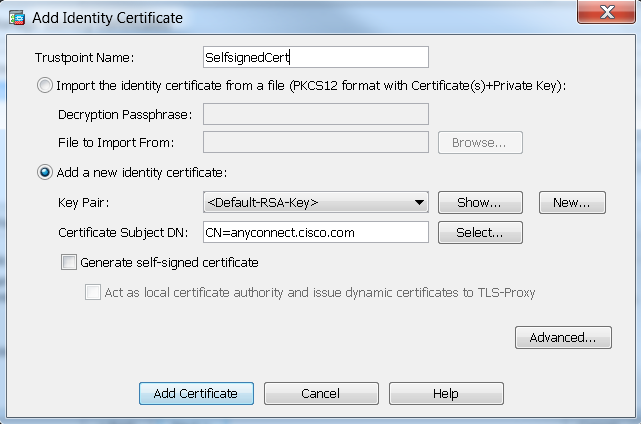Local AnyConnect Profiles XML and profile files are stored locally to the users machine. The location varies based on OS. Windows XP%ALLUSERSPROFILE. Dear fellow cisco enthusiasts.:) I am experiencing quite a strange situation. We have upgraded our AnyConnect from version 4.x to 4.5 (04029) on the ASA. We tested everything and clients started to update automatically when making VPN connection.
The Remote Access VPN is a virtual private network that creates a safe and encrypted connection over the Internet.
You may connect to the VPN to securely access on-campus UGA systems from off-campus. You may also use it to gain access to restricted or sensitive information while on-campus.
You can download the Cisco AnyConnect VPN client from the app store appropriate for your device or from the UGA Remote Access page. If you are having difficulty installing directly from the enterprise VPN, the following stand alone installers are available:
We recommend using either Firefox or Google when downloading the AnyConnect for Windows installer. There are known issues associated with both Internet Explorer and Microsoft Edge when used to download the AnyConnect version for Windows. If you are having issues installing the VPN on a Mac, click here. If you have any questions or need assistance, please email theEITS Help Deskor call 706-542-3106. |
To log in to the VPN, you will need to use ArchPass, UGA’s two-step login solution powered by Duo. You can enroll devices in Duo through the Self-Service Portal on the ArchPass website.
To connect to the VPN:

- Open your VPN client and type remote.uga.edu
- Choose a VPN Group
- Enter your MyID and Password
- In the “Second Password” field, either enter a passcode generated by your Duo Mobile App or type in your authentication method:
- Push – receive push notification
- SMS – receive passcode via text message
- Phone – receive phone call to mobile or landline
You can find screenshots and complete instructions for using ArchPass with the VPN on the EITS Help Desk site.
01 Default is for general VPN use, to gain access to on-campus UGA systems while off-campus. It is available to any UGA student, faculty and staff member. Most users will choose this group.
Each time you log in to the Remote Access VPN you will receive an email notice. This process is intended to help minimize fraudulent logins to the VPN.
The notice will come from soc@uga.edu and have the subject line 'Alert: UGA Remote Access VPN Login...'

If you have not logged in to the Remote Access VPN and receive an email notice, your MyID password may be compromised.
In that case, you should contact UGA's Office of Information Security by emailing abuse@uga.edu. You will be asked to provide information in the email notice.
Cisco Anyconnect Secure Mobility Client Setup
As always, if you are unsure if an email is legitimate, you may contact the EITS Help Desk at 706-542-3106 or helpdesk@uga.edu
AnyConnect client profiles are downloaded to clients along with the VPN AnyConnect client software. These profiles define many client-related options, such as auto-connect on startup and auto-reconnect, and whether the end-user can change the option from the AnyConnect client preferences and advanced settings.
Cisco Anyconnect Secure Mobility Client Setup Wizard

If you configure a fully-qualified hostname (FQDN) for the outside interface when configuring the remote access VPN connection, the system creates a client profile for you. This profile enables the default settings. You must create and upload VPN AnyConnect client profiles only if you want non-default behavior. Note that client profiles are optional: if you do not upload one, AnyConnect clients will use default settings for all profile-controlled options.
Note: You must include the FTDdevice’s outside interface in the VPN profile’s server list for the AnyConnect client to display all user-controllable settings on the first connection. If you do not add the address or FQDN as a host entry in the profile, then filters do not apply for the session. For example, if you create a certificate match and the certificate properly matches the criteria, but you do not add the device as a host entry in that profile, the certificate match is ignored.
You can also create AnyConnect client profile objects while editing a profile property by clicking the Create New AnyConnect Client Profile link shown in the object list.
Before you begin
Cisco Anyconnect Secure Mobility Client Windows 10
Before you can upload VPN AnyConnect client profiles, you must do the following.
Cisco Anyconnect Secure Mobility Client Configuration
- Download and install the stand-alone AnyConnect “Profile Editor - Windows / Standalone installer (MSI).” The installation file is for Windows only and has the file name anyconnect-profileeditor-win-<version>-k9.msi, where <version> is the AnyConnect version. For example, anyconnect-profileeditor-win-4.3.04027-k9.msi. You must also install Java JRE 1.6 (or higher) before installing the profile editor. Obtain the AnyConnect profile editor from https://software.cisco.com/download/home/283000185 in the AnyConnect Secure Mobility Client category.
- Use the profile editor to create the profiles you need. You should specify the hostname or IP address of the outside interface in the profile. For detailed information, see the editor’s online help.
The following procedure explains how you can create and edit objects directly through the Objects page:
Cisco Anyconnect Secure Mobility Client Setup Failed
Create an AnyConnect Client Profile Object
Cisco Anyconnect Secure Mobility Client Setup Was Interrupted
- In the CDO navigation bar at the left, click Objects.
- Click the blue plus button.
- Click RA VPN Objects (ASA & FTD) > AnyConnect Client Profile.
- In the ObjectName field, enter a name for the AnyConnect client profile.
- Click Browse and select the file you created using the Profile Editor.
- Click Open to upload the profile.
- Click Add to add the object.




